A fairly large greyish skinned saprotrophic fungi, growing solitary or in smaller groups on dead woods of various deciduous trees. Once you have learned it, it is rather unmistakable, but until that, check the lookalikes. The bootlace like white mycelial cords or rhizomorphs are a good identification feature of this mushroom.
Home / Mushroom Guide /
Whitelaced Shank
Whitelaced Shank
| Mushroom Type | |
| Common Names |
Whitelaced Shank (EN), Hegl Gwyngareog (CY), Pieniążnica Szerokoblaszkowa (PL), Széleslemezű Fülőke (HU) |
| Scientific Name |
Megacollybia platyphylla |
| Synonyms |
Clitocybula platyphylla, Oudemansiella platyphylla, Gymnopus platyphyllus, Collybia platyphylla |
| Season Start |
Jun |
| Season End |
Nov |
| Average Mushroom height (CM) |
5–10 |
| Average Cap width (CM) |
5–15 |
Please note that each and every mushroom you come across may vary in appearance to these photos.
Cap
5–15 cm across, sometimes even bigger. Initially convex, flattening with age with or without a wide, low umbo. Grey to greyish brown, becoming paler with time. Radially fibrillose with an even margin which might cracking up later.
Gills
Crowded, initially white becoming more off-white to pale cream with age. Very broad (hence the scientific name), more-or less attached to the stem (adnate-notched), the edge of the gills could be smooth to eroded.
Stem
5–10(15) cm tall, 0.5–2cm wide, white to grey, always paler at the apex (top of the stem). More or less cylindrical, often slightly widening towards the base where you can find the most important ID feature, the white, rather strong mycelial cord (called: rhizomorph). Pictured above in the gallery.
Flesh
Extremely thin, white in both the cap and the stem, soft in the cap, rather tough in the stem.
Habitat
Saprotrophic, growing solitary or more commonly in smaller groups on dead wood of hardwoods (e.g., tree trunks, wider branches and/or stumps), and rarely on wood debris of conifers. Sometimes look like growing out of soil, but in this case it grows from already dead roots or buried woods of trees.
Possible Confusion
It is a rather easily recognisable species if you know what to look for, but here are a few possible confusions:
Deer Shield (Pluteus cervinus) grows on the same habitat as Whitelaced Shank (Megacollybia platyphylla), but normally it has darker brown and shiny skin which rarely cracks, its stem has longitudinal dark striation and has a rather raphanoid smell (smells like radish).
Willow Shield (Pluteus salicinus) has a much smaller cap (3–5 cm in diameter) and it grows most of all on Willows, less frequently on Alder.
Common Cavalier (Melanoleuca polioleuca) is much smaller and grows on soil, not on woods, not to mention that its spores look different under microscope (they are warty, compared to the smooth and broadly ellipsoid spores of the Whitelaced Shank).
Some authors says it is strongly resembling to the grey coloured knights (Tricholoma spp.), such as the grey knight (Tricholoma terreum), but some of them grow on different habitats, also, all of them have strong, identical scents/odours.
Spore Print
Spore print is white. Spores are almost spherical (subglobose), broadly ellipsoid, smooth, inamyloid (which proves there is no starch in the spore wall).
Taste / Smell
Inedible. Taste and smell not distinctive.
Frequency
Common and widespread on the British Isles.
Other Facts
The epithet (2nd part of the scientific name) refers to the very broad gills of the species (platyphylla means: broad leaves, or gills in this sense).


 (2 votes, average: 4.50 out of 5)
(2 votes, average: 4.50 out of 5)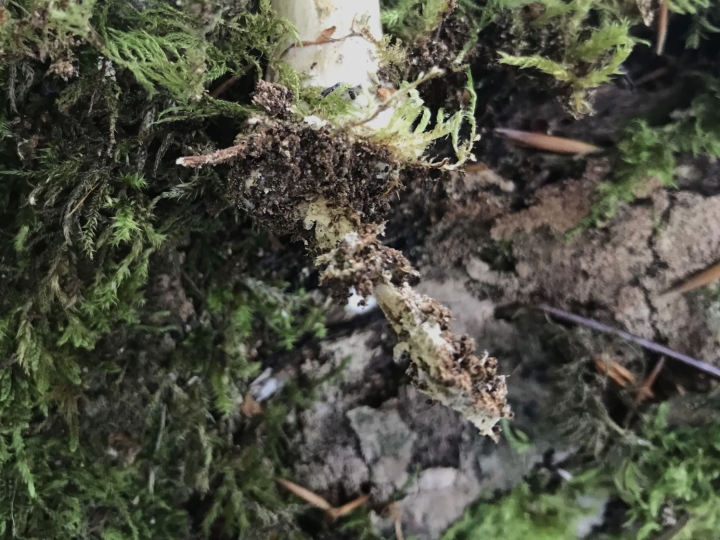















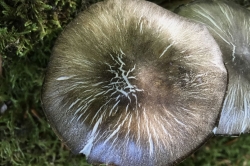
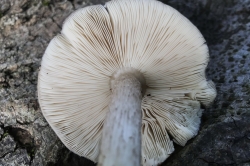
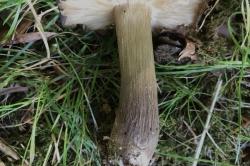
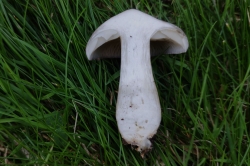
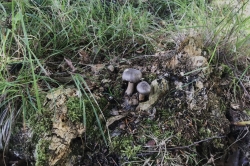






Leave a Reply